In Their Own Words: Reflections From the Neighborhood Leadership Academy
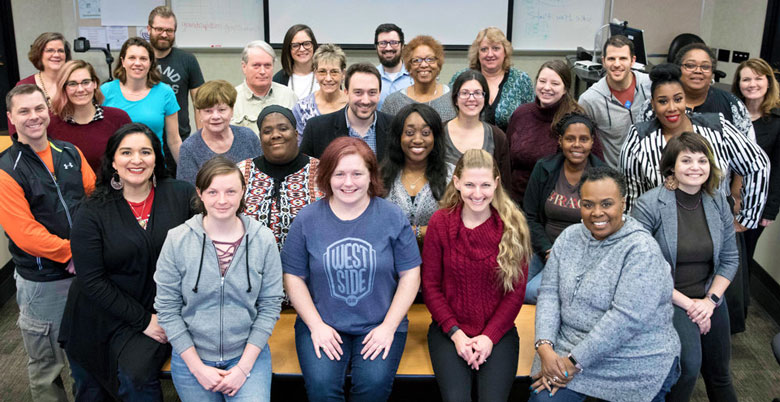

At the Johnson Center, we see community engagement itself as a form of philanthropy: a giving of time, talent, and treasure for the betterment of society and your neighbors.
And we’re not alone in this philosophy. This past January, the Johnson Center collaborated with a strong group of partners and over 30 representatives from neighborhood associations across the city to shape the first-ever Neighborhood Leadership Academy (NLA). This 8-week initiative, which ran from January 5 to February 23, was designed to provide neighborhood associations with the tools they need to be successful vehicles for civic engagement and change.
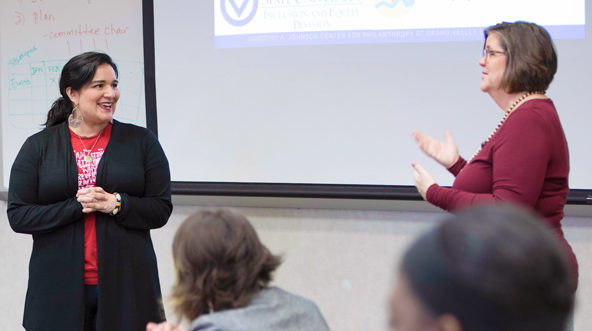
PHOTO: Stacy Stout (left) and Tamela Spicer (right) lead the 2018 Neighborhood Leadership Academy
In 2017, Stacy Stout, Assistant to the City Manager, met numerous times with local leaders from several neighborhood associations to co-create an outline of learning objectives and topics to increase associations’ core organizational capacity and impact. This ad hoc team helped map out key training structures — such as planning adequate time for discussion — and was intentional about shaping an Academy experience that could benefit associations with various levels of current capacity. Stacy and the Johnson Center’s Nonprofit Services team then worked together to build on that outline and design a curriculum that touched on everything from racial equity to fund development and volunteer management. Relando Thompkins-Jones and Marlene Kowalski-Braun, from the Division of Inclusion and Equity at Grand Valley State University, contributed material and facilitation to ensure the curriculum was intentionally inclusive and accessible.
One of our favorite offerings? Free child care for all participants during the hours of each session. A special thank you to Stacy and the childcare provider, Erica Soto, for helping to make that happen!
Hear from several of our recent graduates about their experience taking part in the Neighborhood Leadership Academy:
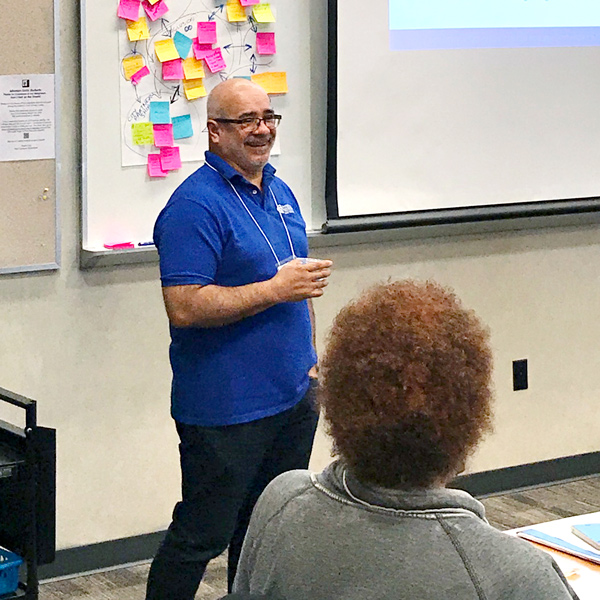
What role do Neighborhood Associations play in civic life?
Neighborhood Associations play a significant role in the civic life of residents by keeping up-to-date on multiple complex city-wide issues — such as code compliance, crime, and safety issues — and the direction that the [city] planning commission and departments are going in reshaping what the future of homes, buildings, and structures are in the area…
What conversation or idea from your NLA experience are you still thinking about, even weeks later? What makes it stick with you?
I really learned from the open dialogue, from the questions that other participants had in the training. Knowing the history of the associations and recognizing that, as a group, we all were willing to have shared experiences without any put downs, personal attacks, or conflicting controversial issues. The idea of establishing a safe space to share personal history, challenges, and opening ourselves to others was very powerful and beautiful at the same time.
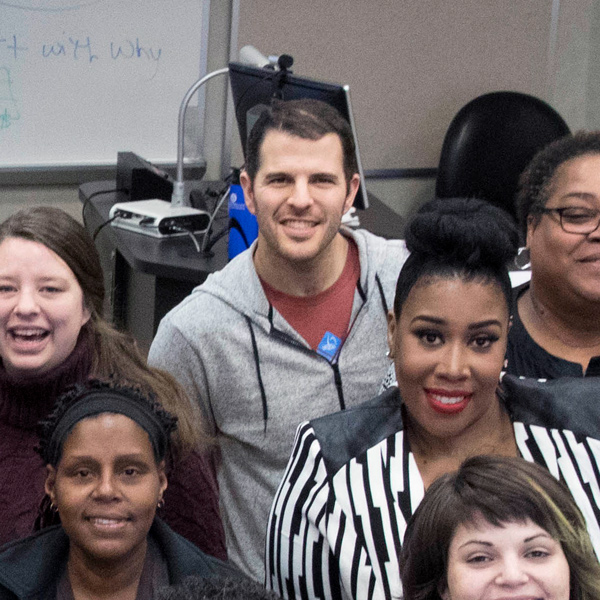
An important rephrasing that I learned from NLA is that the mission of a nonprofit is to facilitate a community response to a community need. This idea is the basis for the work that we do in the Creston Neighborhood and highlights the essential place of community input in the functioning of our city.
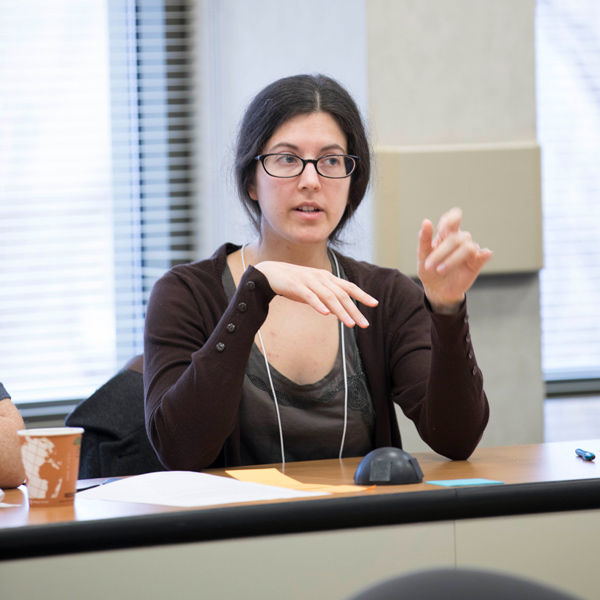
What role do Neighborhood Associations play in civic life?
Neighborhood Associations are a fantastic training ground for democracy. We have the opportunity to elect representatives and hold them accountable as well as to determine and execute collective actions. Everything we learn can be applied on the larger scales of municipal, state, and federal government.
What strategies or concepts from the NLA are you most likely to implement with your community and/or organization? Why?
We’ve already brought back some of the governance and multiple relationship concepts to our board: that their areas of focus, as a body, are vision, strategy, budget, and policy, while their work as committee members is more on an equal footing with staff. At the same time, both the board and the executive director have to be engaged in setting the trajectory of the organization, and that can be challenging for many organizations.
What conversation or idea from your NLA experience are you still thinking about, even weeks later? What makes it stick with you?
One of the things that haunts me is how we noted racism in our community has gone underground. It’s not as blatant as in previous generations. Instead, it takes forms such as insidious differences in expectations for individuals of varying races.

How has/will the NLA support the capacity of your organization?
The Neighborhood Leadership Academy was of great support for capacity building for the Heartside Neighborhood Association. The program was the perfect fit for us at the right time because, as an association, we are beginning to get more wind beneath our wings. We want to play an integral part in creating a singular vision for Heartside and many of our trainings at the Academy helped us understand how to deal with different kinds of people… I feel way more prepared to make a positive contribution to a viable and effective Neighborhood Association than I did when I started.
What learning from NLA sticks out as helpful to you personally?
All of it was so good! I can’t stop raving about the academy and its dynamic speakers and facilitators at the Johnson Center. I guess if I had to pick something from the learning, it would be the pieces around the culture of strategic thinking, what successful shared agreements look like, and the notion that “vision is caught, not taught.” This was helpful for me personally because now I understand more than ever that the more authentic your engagement is with people from the neighborhood, the better your opportunities for buy-in or co-creation of a shared vision will be. “What’s from the heart, reaches the heart,” so you create a solid foundation for trust, responsibility, and mutual respect on a board, in your hood, and in the association when you keep an open mind about collaboration.
How does NLA learning impact Grand Rapids as a whole?
I believe opportunities like the NLA are important because they empower people to shape their respective neighborhoods which ultimately shift communities. Building resident voice is paramount to the collective impact required to build Grand Rapids into a top-of-mind destination for tourists who may be considering Grand Rapids as their next landing spot. Whether we are living, working, or playing in a neighborhood, educated and empowered people in a community evoke thriving neighborhoods, which [in turn] equal amazing cities to call home.
Responses have been edited for clarity and to fit within this space. Additional organizations that participated are John Ball Area Neighbors, Midtown Neighborhood Association, Seeds of Promise, and West Grand Neighborhood Organization.